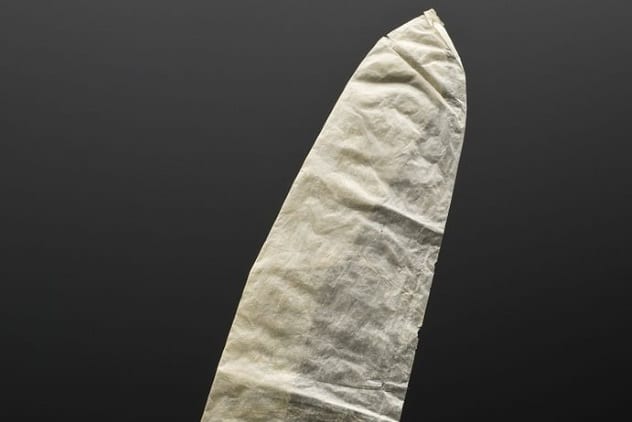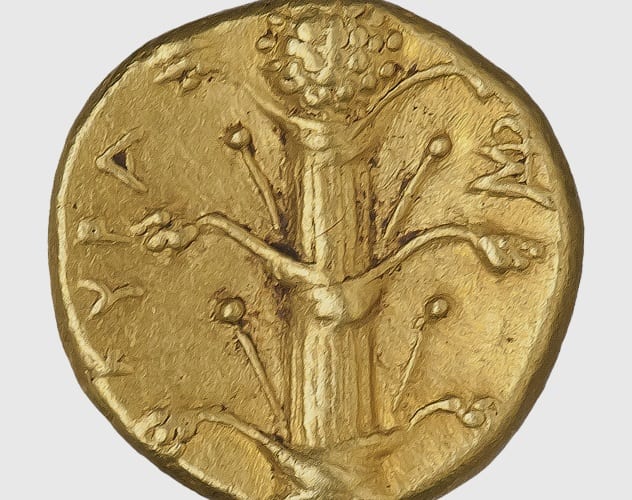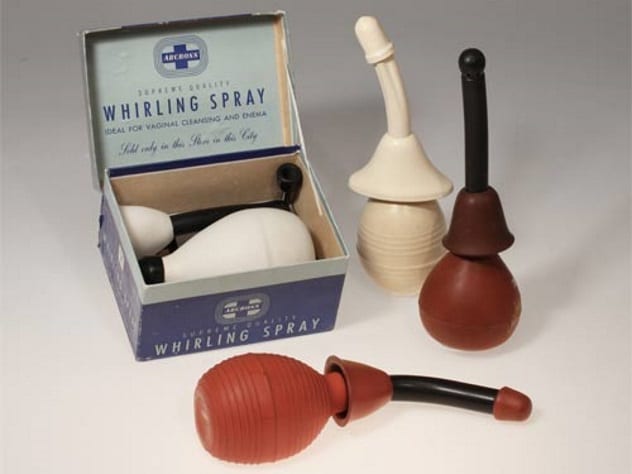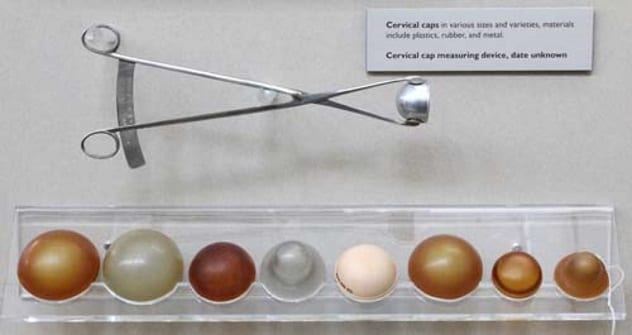 Music
Music  Music
Music  History
History 10 Less Than Jolly Events That Occurred on December 25
 Weird Stuff
Weird Stuff 10 Funny Ways That Researchers Overthink Christmas
 Politics
Politics 10 Political Scandals That Sent Crowds Into the Streets
 Weird Stuff
Weird Stuff Ten Bizarre Facts About The Doge Meme
 Our World
Our World 10 Ways Your Christmas Tree Is More Lit Than You Think
 Movies and TV
Movies and TV The 10 Coolest Stars to Set Sail on The Love Boat
 History
History 10 Things You Didn’t Know About the American National Anthem
 Technology
Technology Top 10 Everyday Tech Buzzwords That Hide a Darker Past
 Humans
Humans 10 Everyday Human Behaviors That Are Actually Survival Instincts
 Music
Music 10 Surprising Origin Stories of Your Favorite Holiday Songs
 History
History 10 Less Than Jolly Events That Occurred on December 25
 Weird Stuff
Weird Stuff 10 Funny Ways That Researchers Overthink Christmas
Who's Behind Listverse?

Jamie Frater
Head Editor
Jamie founded Listverse due to an insatiable desire to share fascinating, obscure, and bizarre facts. He has been a guest speaker on numerous national radio and television stations and is a five time published author.
More About Us Politics
Politics 10 Political Scandals That Sent Crowds Into the Streets
 Weird Stuff
Weird Stuff Ten Bizarre Facts About The Doge Meme
 Our World
Our World 10 Ways Your Christmas Tree Is More Lit Than You Think
 Movies and TV
Movies and TV The 10 Coolest Stars to Set Sail on The Love Boat
 History
History 10 Things You Didn’t Know About the American National Anthem
 Technology
Technology Top 10 Everyday Tech Buzzwords That Hide a Darker Past
 Humans
Humans 10 Everyday Human Behaviors That Are Actually Survival Instincts
10 Old-School And Obscure Birth Control Methods You Didn’t Know
The idea of using contraceptives is as old as time. Due to the advanced medicine of today, we have many forms available to suit anyone’s needs, but this wasn’t always the case. From stealthy pessaries to handcrafted condoms, the birth control devices of old range from ineffective to bizarre.
The first birth control clinic in the US was opened in 1916 in New York City by Margaret Sanger, an advocate for the right to contraceptive use.[1] The approval of such offices appears to have been controversial even back then, as the first one had a difficult time finding doctors and was quickly shut down after its initial opening. Still, professionals carried on with their work in the pursuit to find and refine contraceptive methods. Their efforts have transformed into the popular techniques we now use today.
While it is difficult to find surviving contraceptive devices of old due to most of the materials being small and made of biodegradable substances, a glance at record books and historical populations gives hints to the fact that some form or other of birth control was most likely in use among different cultures throughout the course of history.
10 Breastfeeding

It is common knowledge that ovulating women can get pregnant unless they are using some form of contraceptive. This cycle can be affected by stress, fluctuating hormones, poor diet choices, and other medical conditions, though. When women do not menstruate for three months or more, it is then considered abnormal and called amenorrhea. The state when a monthly cycle is interrupted is not always a cause for concern and can even occur naturally.
One natural event that results in a woman not ovulating is pregnancy. A lesser-known fact is that if a woman nurses a young baby of fewer than six months old, there is a reaction within the brain from the suckling process that can stop her body from releasing an egg. The process ensures she is not able to become pregnant while still caring for a newborn. To take advantage of this natural period of infertility and utilize it as a form of birth control, a woman can continue to breastfeed her baby at regular intervals using the Lactation Amenorrhea Method, or LAM.
In ancient times, LAM was not only well-known but commonly practiced. Purposefully or not, a woman would sometimes maintain the breastfeeding cycle for up to three years to keep from becoming pregnant. The natural use of this technique particularly kept nomadic families to relatively small sizes, making it easier to maintain their roaming lifestyle.[2]
9 Animal Intestines And Fish Membranes

The use of condoms is not new, though it is difficult to nail down exactly when they first became popular because the materials used were biodegradable and often did not survive the wear of time. It was realized early on, though, that a protective covering could help prevent pregnancy, and over the years, multiple forms were tested. Animal materials won the prize and were widely regarded as the most effective and readily available. Interestingly enough, though, the condom was used more frequently to protect against venereal diseases instead of pregnancy, as conditions such as syphilis were common and widespread. A well known tenth-century Persian physician, Al-Akhawayni Bukhari, would even recommend a gallbladder to his patients as protection against illness.
When the use of condoms became more popular, pharmacies began to regularly stock certain brands and styles. One of the common brands was the “goldbeater.” Made of animal intestines, the thin material was originally developed for use in processing gold leaf, hence its given name. However, the finely pounded skin was also found to be perfect for use as a condom because it was reasonably waterproof and flexible and had great durability.
While all of these materials worked well and were readily accessible, a fish membrane, specifically the swim bladder, became the condom of choice for its superior quality and protection against pregnancy and syphilis.[3]
8 Silphium And Related Flora

Silphium is a now-extinct plant due to its popular use as a natural contraceptive in the ancient world. Thought to be related to the fennel family, the plant grew in the area of what is now modern-day Libya and was cultivated for its resin. Because of its extreme effectiveness and desirability, images of the flora even appeared on the currency of the civilization where it was most popular.
Unfortunately, the plant was quickly used up, and the exact family to which silphium belonged is still uncertain, though it has been speculated to perhaps still be in existence as a misidentified flower. Interestingly, the seed of the silphium plant is depicted as being heart-shaped, leading a few to believe that the plant may have become the modern-day symbol of love.[4]
Another couple of plants known to cause abortions and infertility are pennyroyal and Queen Anne’s lace. The oil and seeds of these weeds are used in some medicines, cooking applications, and herbal remedies. The danger in the use of pennyroyal, though, is that the amount needed to cause an abortion can also cause kidney and liver damage. Queen Anne’s lace is a little bit safer if you know what you’re doing but is also technically classified as a poisonous plant.
Another problem with these supplements is that they can easily be confused with different and more deadly versions. Despite the foreboding issues, both types are still used by herbalists and in poor communities.
7 Lysol Douches

A douche is known today as a feminine hygiene product, but it was also widely thought to be usable as a method of contraception when first introduced. As a douche is used to “wash out” the inside of the vagina, the idea was that sperm, too, would be rinsed out after coition. In fact, the idea is completely backward and could actually help push material up into the uterus and assist with pregnancy.
Another issue with douching as a method of contraception is that the water used inside a douche used to be mixed with disinfectants like Lysol.[5] This was considered the same as using spermicides; however, regular washing changes the chemical composition of the inner vaginal walls. As this part of the body is naturally a hostile environment for sperm, the process most likely left ladies’ insides more vulnerable to diseases and pregnancy than before the wash.
6 Plant Resin And Animal Feces

A tried and true natural spermicide can be made from a paste of acacia tree gum and honey. Acacia ferments and produces lactic acid, which will kill sperm if they come into contact with it.
The mixture was soaked in cotton and placed into the vagina in ancient Egypt, but this wasn’t the only natural spermicide that was popularly used.[6] Everything from crocodile to elephant dung has been rumored to work and were also utilized often throughout parts of Asia.
5 Rythmeter

During the early years of the 1900s, birth control was more controversial than ever. On the one hand, there was an entire church following completely against contraceptives, and on the other, people were realizing that a substantial financial burden could be avoided merely by having fewer children. For this reason, scientists were looking closely into the science of contraception and exactly when a woman was and wasn’t fertile.[7]
The problem was that most doctors studied animals and assumed women’s systems were the same; they soon found this not to be true. Upon the realization that doctors had been basing their observations off inaccurate subjects, scientists began delving further into the mystery of a woman’s fertile period. From these studies, a technical device known as a “Rythmeter” developed.
The complicated-looking wheel was meant for a woman to use as a calendar of her menstrual cycle and was supposed to help calculate when she was in a safe “rhythm” of infertility. Unfortunately, every body is different, and a lot of outside factors can come into play when trying to calculate virility. Although it was popular, compared to actual contraceptive devices like condoms, it was by far not the most effective.
4 Cervical Caps

The cervical cap has been around for centuries and only fell out of popularity recently because condoms and the pill became more widespread. However, it is making a comeback as a formidable means of birth control.
Usually used with another spermicide, the cervical cap is smaller than a diaphragm and creates a barrier around the cervix that sperm cannot get through. Through the centuries, such devices have been produced, even en masse, in the form of leather, metal, and plastic. One of the most famously creative ones, though, may have come from the notes of Giacomo Casanova.
Casanova, one of the more prominent historical figures known for his charm, noted in his memoirs the use of half a lemon as a cervical cap. Accompanying this with either a goat bladder or linen condom was one of his tried and true methods to prevent pregnancy. The acidity of the lemon most likely acted as a natural spermicide and probably accomplished its task relatively well.[8]
3 Electrocautery

For years, multiple types of sterilization techniques have been tested in the medical world in an attempt to limit populations and to prevent those with medical issues from getting pregnant. Today, tube tying is particularly common for women, especially after having children, as a way to prevent a family from growing any larger. The primary benefit of this method is that it can often be undone, but this was not always the case.
One technique that was often endeavored and used in the late 1800s was that of electrocautery.[9] Cauterization by the use of running electricity through metal rods was not uncommon, and it only made sense that this could be performed on the fallopian tubes. Using electrodes to seal off the pathways was meant to prevent eggs from becoming fertilized.
The technique was not necessarily known for being successful and caused more concern for safety than anything. However, it was popularly attempted for decades.
2 Rue, Pepper, And Pomegranate Seeds

Muslim scholar Muhammad ibn Zakariya al-Razi suggested a mixture of rue juice and pepper to be taken as the historical equivalent of a morning after pill. The herbal concoction was supposed to induce abortions, but the efficacy is up for questioning.[10]
The Greeks, on the other hand, believed pomegranate seeds would reduce fertility, and it has been scientifically shown that rats that are fed the fruit do become less fertile.
1 Lead And Mercury

Perhaps the most truly dangerous contraceptive was seen in ancient China. Women in imperial times would intentionally drink metals such as mercury and lead to ensure that they didn’t become pregnant.[11]
Today, we know that such substances would not only render you infertile but also make you extremely sick or crazy, result in organ failure, or cause other permanent damage. Unfortunately, the practice was relatively effective at preventing pregnancy and is known to have been in widespread use throughout the course of history.
A freelance writer of content and copy living the dream of a digital nomad. Learning skills and exploring new places is my favorite hobby.
Read more about bizarre birth control methods from the past on 10 Strange Methods Of Birth Control From History and 10 Ancient Methods of Birth Control.








